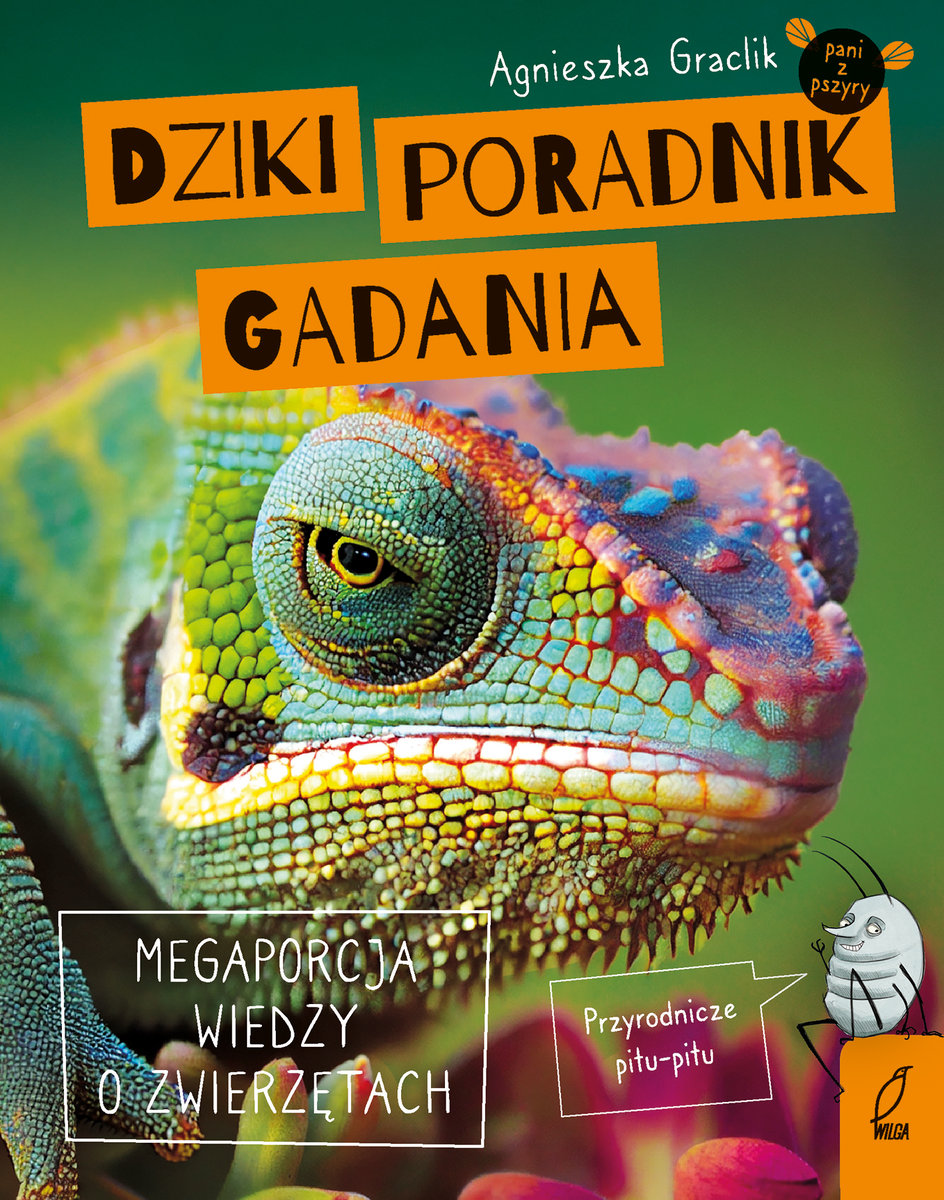The_Demotic_Magical_Papyrus_of_London_and_Leiden
| Szczegóły | |
|---|---|
| Tytuł | The_Demotic_Magical_Papyrus_of_London_and_Leiden |
| Rozszerzenie: | |
Jesteś autorem/wydawcą tego dokumentu/książki i zauważyłeś że ktoś wgrał ją bez Twojej zgody? Nie życzysz sobie, aby pdf był dostępny w naszym serwisie? Napisz na adres [email protected] a my odpowiemy na skargę i usuniemy zabroniony dokument w ciągu 24 godzin.

The_Demotic_Magical_Papyrus_of_London_and_Leiden PDF Ebook podgląd online:
Pobierz PDF
Zobacz podgląd The_Demotic_Magical_Papyrus_of_London_and_Leiden pdf poniżej lub pobierz na swoje urządzenie za darmo bez rejestracji. The_Demotic_Magical_Papyrus_of_London_and_Leiden Ebook podgląd za darmo w formacie PDF tylko na PDF-X.PL. Niektóre ebooki są ściśle chronione prawem autorskim i rozpowszechnianie ich jest zabronione, więc w takich wypadkach zamiast podglądu możesz jedynie przeczytać informacje, detale, opinie oraz sprawdzić okładkę.
The_Demotic_Magical_Papyrus_of_London_and_Leiden Ebook transkrypt - 20 pierwszych stron:
Strona 1
THE DEMOTIC MAGICAL PAPYRUS
OF LONDON AND LEIDEN
Edited by Francis Llewellyn Griffith and Herbert
Thompson
H. Grevel & Co.; London
[1904]
scanned at sacred-texts.com, April 2005. John Bruno Hare, redactor. This text is in the public domain in the
United States because it was published prior to 1922. These files may be used for any non-commercial
purpose, provided this notice of attribution is left intact in all copies.
Source URL:
Strona 2
p. iii
PREFACE
THE MS., dating from the third century A.D., which is here edited for the first time in a
single whole, has long been known to scholars. Its subject-matter--magic and medicine--
is not destitute of interest. It is closely connected with the Greek magical papyri from
Egypt of the same period, but, being written in demotic, naturally does not reproduce the
Greek hymns which are so important a feature of those papyri. The influence of purely
Greek mythology also is here by comparison very slight--hardly greater than that of the
Alexandrian Judaism which has supplied a number of names of Hellenistic form to the
demotic magician. Mithraism has apparently contributed nothing at all: Christianity
probably only a deformed reference to the Father in Heaven. On the other hand, as might
have been expected, Egyptian mythology has an overwhelmingly strong position, and
whereas the Greek papyri scarcely go beyond Hermes, Anubis, and the Osiris legend, the
demotic magician introduces Khons, Amon, and many other Egyptian gods. Also,
whereas the former assume a knowledge of the modus operandi in divination by the lamp
and bowl, the latter describes it in great detail.
But the papyrus is especially interesting for the language in which it is written. It is
probably the
p. vi
latest Egyptian MS. which we possess written in the demotic script, and it presents us
with the form of the language as written--almost as spoken--by the pagans at the time
when the Greek alphabet was being adopted by the Christians. It must not be forgotten,
too, that this is the document which contributed perhaps more than any other to the
decipherment of demotic, partly through its numerous Greek glosses.
We have therefore thought that a complete edition, with special reference to its
philological importance, would be useful. The vocabulary is extensive, comprising about
a thousand words. The present volume, containing the introduction, the transliteration,
translation, and notes, will be followed by a complete glossary, with separate indices of
Greek words, invocation names, names of animals, plants, and minerals, and a list of the
glosses, &c., besides a chapter dealing with the principal grammatical forms met with in
the MS., and a hand-copy of the text; the photographic reproduction by Hess of the pages
in the British Museum and Leemans' facsimile of those at Leiden will of course preserve
their independent value for reference, as, for instance, in judging the condition of the MS.
and the precise forms of the signs in particular passages.
There is considerable inconsistency in the spelling of words in the papyrus itself. So
much having to be rendered more or less conventionally, while fresh light is thrown daily
on the intricacies of demotic, it is probable that there are a good many inconsistencies in
our transliterations, translations, and notes, in spite of the watchfulness of the excellent
reader at the Clarendon
Strona 3
p. vii
Press. Those, however, who have dealt with the subject at all will probably
[paragraph continues]
not judge these too hardly.
In conclusion, we have to record our gratitude, first, to our predecessors in publication
and decipherment of the papyrus--to Reuvens, Leemans, and Hess, to Brugsch, Maspero,
Revillout, and W. Max Müller--but for whose varied contributions our task would have
been infinitely more laborious even in the present advanced state of the study: and
secondly, to the authorities of the Egyptian department in the British Museum, and of the
Rijksmuseum in Leiden, for their courtesy in affording every facility for studying the
original MS., and more especially to Dr. Boeser of the Leiden Museum for much
kindness and assistance.
F. LL. G.
H. T.
Strona 4
p. ix
CONTENTS
INTRODUCTION
PAGE.
I. The History of the MS 1
II. Condition of the MS 3
III. Contents of the MS 5
IV. Previous work on the MS 7
V. The Glosses 8
VI. Date 10
SYNOPSIS OF CONTENTS 15
EXPLANATION OF SIGNS 19
TEXT--RECTO--Transliteration and 20--169
Translation
VERSO--Transliteration and 170--205
Translation
CORRESPONDENCE OF COLUMNS 207
Strona 5
p. 1
INTRODUCTION
I. HISTORY OF THE MS.
THE demotic magical papyrus of London and Leiden was discovered at Thebes with
other papyri, principally Greek but dealing with subjects of a like nature, in the early part
of the last century, and was bought by Anastasi, who was at that time Swedish consul at
Alexandria, and made a large collection of Egyptian MSS. When Anastasi obtained the
MS. it must already have been torn into two parts, and it is even probable that he obtained
the two parts at different times, since he sold his Egyptian collections, including the
Leiden MS., to the Dutch government in 1828, while the London portion was bought at
the sale of his later collections at Paris in 1857 for the British Museum (No. 1072 in
Lenormant's Catalogue).
The Leiden fragment was made known to the world much earlier than that in the British
Museum. Its importance for the deciphering of the demotic script by the help of the
numerous glosses in Graeco-Coptic characters was at once perceived by the distinguished
scholar Reuvens, at that time Director of the Leiden Museum of Antiquities, who
proceeded to study it carefully, and in 1830 published an admirable essay 1 in which he
sketched the principal contents of the MS. and indicated its value for the progress of
demotic
p. 2
studies. He then took in hand its reproduction, and the MS. was lithographed in facsimile
under his direction, and he had corrected the proofs of the first plate when he was cut off
by a premature death in 1835; his work was carried to completion and published by his
successor in the Directorship of the Museum, Leemans, in 1839 1. Heinrich Brugsch
studied it closely, and drew from it most of the examples quoted in his Demotic Grammar
published in 1855; but, although later scholars have frequently quoted from it and
translated fragments of it, the MS. has hitherto remained without complete translation,
commentary, or glossary.
The London MS., however, lay from 1857 onwards almost unnoticed in the British
Museum. To the late Dr. Pleyte, Leemans' successor at Leiden, belongs the credit of
discovering that the two MSS. originally formed one. He had studied the Leiden portion,
and at once recognized the handwriting of its fellow in London. Without publishing the
fact, he communicated it to Professor Hess of Freiburg, when the latter was working in
Leiden on the MS. there. Professor Hess went on to London, and, having fully confirmed
Dr. Pleyte's statement, published in 1892 a reproduction of the British Museum MS. with
an introduction, including the translation of one column, and a glossary 2.
Reuvens in his essay dwelt at some length on the 'gnostic' character of the MS. He
devoted his attention mainly to the parts which contain the glosses, and those are almost
Strona 6
exclusively magical invocations, among which occur the names of gods, spirits, and
demons, Egyptian, Syrian, Jewish, &c., strung together in a manner similar
p. 3
to those found in gnostic writings and on gnostic gems. He even went so far as to
associate them with the name of a particular gnostic leader, Marcus, of the second
century, chiefly on the ground of his recorded use of Hebrew and Syriac names in his
invocations and the combinations of vowels. In consequence the MS. has acquired the
name of the 'Leiden Gnostic,' and the term 'Gnostic' has been passed on to the London
MS. But as will be seen from the complete translation here published, there is nothing in
the work relating to the gnostic systems--it deals with magic and medicine, and it seems a
misnomer to call the MS. gnostic merely because part of the stock-in-trade of the
magician and medicine-man were a number of invocation names which he either picked
up from the gnostics or derived from sources common to him and them. Hence it has
been thought desirable to abandon the epithet 'gnostic,' and to call the work the 'Magical
papyrus of London and Leiden' (Pap. mag. LL.).
II. CONDITION OF THE MS.
The London portion is in far better condition than the Leiden portion. The papyrus is pale
in colour and the ink very black; consequently where the MS. has not suffered material
damage it is easy to read, as the scribe wrote a beautiful and regular hand.
The Leiden papyrus, on the other hand, has unfortunately suffered much, as Leemans,
with a view to protecting the surface, covered both recto and verso with 'vegetable' paper,
which probably could not be removed now without serious injury to the MS.; but either
the paper or the adhesive matter employed with it has darkened and decayed, rendering
the writing illegible in places.
p. 4
In 1829, while the MS. was still in charge of Reuvens and before it had been subjected to
the operation above described, he took a tracing of it which has been preserved, and
which, though of little assistance in points of minute detail, may be relied on for filling up
with certainty many groups which are now wholly lost in the original.
The main body of the writing is on the recto (horizontal fibres) of the papyrus, while on
the verso are written memoranda, medical prescriptions, and short invocations.
The London MS. is Pap. No. 10070 of the British Museum (formerly Anast. 1072).
The Leiden MS. is known as I. 383 (reckoned among the Anastasi MSS. as A. 65).
The London portion forms the initial part of the MS. and joins on to the Leiden portion
without a break, the tenth and last column of the London MS. and the first of the Leiden
forming one column.
Strona 7
The first London column is imperfect, and it is not possible to say with certainty whether
the MS. began with it or whether there was an anterior part now lost. It is quite possible
that it began here. On the other hand, it is certain that the MS. is imperfect at the end,
since the broken edge of the papyrus at Leiden shows traces of a column of writing
succeeding the present final column.
It is impossible to estimate how much is lost, as the MS. is not an original composition on
a definite plan, but a compilation of heterogeneous material collected together without
any logical order.
The two portions, if joined together, would measure, roughly speaking, some 5 M. (about
16½ feet) in length. In height it averages nearly 25 cm. (10 in.). The writing is in
columns, of which there are twenty-nine on the
p. 5
recto, while on the verso are thirty-three small columns or portions of columns; but these
are not marked off, as are the recto columns, by vertical and horizontal framing lines 1,
nor are they written continuously, but they seem to have been jotted down there on
account of their brevity and discontinuous character.
The recto columns vary somewhat in size, but average 20 x 20 cm. (8 in. square). The
writing is frequently carried beyond the framing lines.
In each column of the recto the number of lines is on the average about thirty to thirty-
three; but the number is very irregular, ranging from forty-three in one column to five in
another.
III. CONTENTS.
As has been stated above, the MS. is a compilation. An analysis of the contents will be
found on page 14. From this it will be seen to consist mainly of directions for divination
processes involving numerous invocations, together with erotica and medical
prescriptions, in which, however, magic plays as large a part as medicine.
The MS. is far from being unique in regard to its contents. Fragments of similar works in
demotic exist at Paris (Louvre, No. 3229, published by Maspero, Quelques papyrus du
Louvre, 1875), and at Leiden (I. 384 verso, Anast. 75, published by Leemans, Mons. du
musée de Leide, 1842, pl. ccxxvi--vii) a MS. partly demotic and partly Greek, the latter
portion being published by Leemans in Pap. graeci mus. lugd. bat. 1885, ii. Pap. V, and
re-edited by Dieterich, Pap. Mag. Mus. Lugd. Bat. The Greek papyri containing similar
texts are numerous, many examples having been published
p. 6
from the museums of Berlin, Leiden, London, and Paris by Goodwin, Parthey, Leemans,
Wessely, and Kenyon.
Strona 8
The well-known codex of the Bibliothèque Nationale published by Wessely, Denkschr.
Kais. Ak. Wiss. Wien, xxxvi. 1888, contains a few invocations in Old Coptic along with
the Greek (cf. Griffith, A. Z. 1901, p. 85, and bibliography, ibid. p. 72).
Magic was from the earliest times largely developed by the Egyptians in relation both to
the dead and the living. Under the former head fall both the pyramid texts and other texts
found in the tombs, including most of the Book of the Dead, which consists mainly of
magical invocations intended to make smooth the path of the deceased in the next world.
Magical texts for the use of the living are found in the Harris magical papyrus (ed.
Chabas, 1860), the Metternich stela (ed. Golenischeff, 1877) and kindred stones, the
Berlin papyrus edited by Erman (Zaubersprüche für Mutter u. Kind, 1901), &c.
Reference may be made to the volume on Egyptian magic by Dr. Wallis Budge, 1899,
and to a special study on vessel-divination by E. Lefébure, 'Le vase divinatoire,' in
Sphinx, 1902, VI. 61 seq. Cf. also Dieterich, 'Abraxas'; Kenyon in Cat. Greek Pap. in B.
M., I. 62 seq.; Miss Macdonald in P. S. B. A., xiii. 160 seq.; Wünsch, Sethianische
Verfluchungstafeln aus Rom, &c.
In the closely allied department of medicine, it is sufficient to refer to the Ebers papyrus,
the Kahun papyri, and the Berlin medical papyrus (ed. Brugsch, Rec. Mon. pl. 87-107),
which offer many parallels. Among the Greek medical writers it is noticeable that
Alexander of Tralles seems much more closely allied to the Egyptian school, if that be
represented by our MS., than Galen.
p. 7
But though the subject-matter of the MS. is not without its interest for the history of
magic and medicine, its chief claim to publication lies in its philological interest. From
the first its numerous glosses have attracted the attention of scholars, and have been the
means of fixing the value of a large number of demotic groups. Further it is in date
probably the latest known papyrus written in the demotic script; most of the glosses are
really Coptic transcriptions, and under this head may likewise be included all the
Egyptian words written in cipher; so that the MS. in these furnishes us with a series of
very early Coptic words, including several grammatical forms of great interest. Possibly
too the text may be of importance in relation to the question of dialects in pagan Egypt;
but that is a subject too little worked out at present to allow of definite statements. The
vocabulary is very extensive, and includes a number of Greek words, the names of over
100 plants, besides numerous animals and minerals.
IV. PREVIOUS WORK ON THE MS.
It may be useful to record here the names of those who have dealt with the MS. at greater
length than a mere passing reference or quotation, and to whom we are indebted for many
suggestions:
REUVENS. Supra, p. 1.
Strona 9
LEEMANS. Mons. &c., texte; Aegyptische Papyrus in demotischer Schrift, &c. 1839.
MASPERO. Rec. tray., i. 18--40 (1870).
REVILLOUT. Setna, introd. pp. 3--48 (1877); Rev. Égypt., i. 163-172 (1880), ii. 10-15, 270-2 (1881);
Poème satyrique (1885).
PLEYTE. P. S. B. A., 1883, 149.
BRUGSCH. Wtb. pass., A. Z., 1884, 18 seq.
MAX MÜLLER. Rec. tr., viii. 172 (1886), xiii. 149 (1890).
p. 8
HESS. Setna pass. (1888), Zur Aussprache des Griechischen, in the Indo-germanische Forschungen, vi.
123; Der gnostische Papyrus von London, Einleitung, Text u. Demotisch-deutsches Glossar, 1892.
GROFF. Mém. de l’Institut Égypt. iii. 337 seq. (1897), and Bulletin du même, 1897, 1898.
As the London portion of the MS., which in the order of contents is the first part, was
published fifty years later than the second part at Leiden, it follows that each publication
has an independent numbering of the columns, starting from I. In view of the fact that
there are many references in demotic literature already to the columns by their numbers
as established by the publications of Leemans and Hess, it would have been desirable to
retain the existing numbering if possible. But, as will be seen by comparison of the hand
copy of the whole MS. which accompanies this edition with the former publications, the
changes in the way of consolidation of the columns, and in some cases necessary re-
numbering of the lines, have made it compulsory to introduce a new and continuous
numbering of the columns. For instance, Hess col. X and Leemans col. I form a single
column, and the same is the case with Leemans cols. II and III and cols. IV and V, and
with verso, cols. XVI and XVII, XXII and XXIII. A comparative table of the old and new
numbers will be found at the end.
V. THE GLOSSES.
There are about 640 words with transcriptions in Coptic characters in addition to a few
inserted in the text.
Besides all the letters of the Greek alphabet we find the following used:--
p. 9
Strona 10
The glosses were undoubtedly written by the same scribe who wrote the demotic text.
And it seems that he wrote the glosses before he filled in the rubrics. For the handwriting
of the demotic text and of the rubrics is unquestionably the same; and in filling up in red
the empty spaces he had left for rubrication, the scribe took occasion to fill in with his red
ink occasional lapses in the black writing. In the text this can be observed in e.g. 24/1, the
omitted of the second str (?) has been filled up in red, and also the omitted
determinative in the last word of 28/8, an omitted letter in pḫr 29/11, an omitted word šn
interlineated in 29/12, and a plural sign in 25/26; and so too the gloss in 28/8,
overlooked when the glosses were originally inserted in black ink.
It is a fact that there is often a considerable difference between the Greek letters in the
passages written in Greek and in the glosses (e. g. παπιπετου in 15/25 and 15/29), but this
may be accounted for by the fact that the former are written in a cursive hand with
ligatures, while the glosses are carefully written with separately formed letters without
ligatures for distinctness' sake in the narrow space between the lines.
The above considerations, however, only show that the text and glosses were written by
the same hand in our existing MS. It does not follow that they were written by the
original compiler. Max Müller has argued (Rec. tr., viii. 175) that they must be due to
another individual since they are mostly in the Fayumic
p. 10
dialect, while the dialect of the demotic text is Untersahidisch' (i. e. Achmimic, so called
by Stern). In Rec. tr., xiii. 152 n., he replaces the latter term by a more precise definition:
'Die Mundart steht zwischen Fayumisch u. dem Mittel-ägyptischen von Akhmîm,
letzterem näher.' But it is very doubtful whether this distinction between the text and the
glosses can be maintained. The only example quoted by Max Müller that distinctly
suggests Fayumic is the gloss and over a group in 16/5 and 25/34, which he reads
as = , regarding the interchange of and as evidence of Fayumic
dialect. But the demotic group in question does not read er-w, but mr as in mr-’ḥ (1/17,
2/7, 14/6, 28), and the gloss represents the absolute form of the late Egyptian word
which we see in its construct form in Sahidic and in λεσωνις. From the
Strona 11
detailed examination of the dialect (in vol. ii) it appears probable that the dialect of the
text does not show any distinction from that of the glosses, and it is not necessary to go
behind the scribe of the present MS. and place the compiler earlier. He may well have
been one and the same.
VI. DATE.
Reuvens (u. s. p. 151) placed the date of the MS. in the first half of the third century A.
D., and this was repeated by Leemans.
Groff and Hess attributed it on palaeographical grounds to the second century; but in the
light of recent additions to the knowledge of Greek palaeography, and the opinions based
on them of Kenyon, Grenfell, and Hunt (see A. Z., xxxix. (1901) p. 78), the third century
must be accepted as the date of the MS. But this, of course,
p. 11
is the date at which the papyrus was written, and merely furnishes a terminus ad quem for
deciding as to the date of the contents.
That the whole of the papyrus, in its present state, was written by one and the same
scribe--with the possible exception of verso XXVIII--can scarcely be a matter of doubt to
any one who has studied closely the handwriting of the original MSS. It must be stated,
however, that Reuvens and Leemans were of opinion that the glosses were written by a
later hand than that of the body of the text: but this question has been discussed above (p.
9), and apart from the identity of ink, and the material proof given there, it may be added
that the hieratic glosses in 27/8 are certainly written by the same hand as the numerous
hieratic passages scattered through the text.
The date of the contents is a much more complicated question. Written partly in hieratic,
partly in demotic, and partly in Greek, they wear the aspect of a compilation, which is
borne out by the varied and disconnected nature of the subject-matter.
It has been suggested that the work is a translation into demotic of a Greek original, and
perhaps this is the first question demanding discussion. Prima facie it may be said to be
likely, as so many similar works exist in Greek. The introduction of three invocations of
considerable length written in Greek characters almost compels us to accept that origin
for those particular sections, viz. 4/1-19, 15/24-31, 23/7-20. It seems probable that the
translator felt he could transfer to Egyptian the prescriptions and preparations, while the
formula of incantation had to be left in the original language. Had these sections been
written in Egyptian originally, it is not likely that an incantation in a foreign tongue
would be inserted in the place presumably of an Egyptian one.
p. 12
And in the first named instance there is the additional evidence of two true
[paragraph continues]
Greek glosses, i. e. not Coptic transcriptions of the demotic words, but Greek equivalents
Strona 12
of the two words 'table' and 'goose,' which seem to be inserted clearly to prevent a
misunderstanding of the original terms. In the second instance 15/24-31, the original
Greek lines 25-28 are immediately followed by a demotic translation of the same passage
(11. 29--31), which points in the same direction. Translation from the Greek is rendered
probable, outside the passages already referred to, by the transcription of Greek
prescriptions and substances in 24/1-25, and verso I, II, VIII, IX. According to an
ingenious suggestion of Max Müller, in verso II the otherwise unintelligible phrase m‘nes
n rm is almost certainly a mistranslation of µαγνησία ἀνδρεία. Max Müller has also (Rec.
tr., viii. 175--6) given strong reasons for regarding the passage 25/23-37 as being
translated from a Greek original. However, even where there are reasons for believing
that the demotic is a translation from the Greek, the original source, in relation to magic
at any rate, was probably Egyptian--certainly so in the case of the Greek passage in
15/25-28, which has itself clearly an Egyptian origin.
On the other hand, some of the chief sections of the MS. show no traces of Greek
influence, e.g. cols. VI and XV. 1-20; but it would be rash to say that they are older; they
may well represent only a purer Egyptian source. Max Müller (Rec. tr., viii. 172) has
suggested that some of the magic formulae go back to the period from the Eighteenth to
the Twentieth Dynasty. This cannot be true of more than a few phrases. The language
indeed is not entirely uniform, but throughout the papyrus the vocabulary and grammar
are distinctly not 'Late Egyptian', they are 'demotic,' and that too
p. 13
of a kind which approaches Coptic much more closely than in any other known papyrus.
Certain passages, such as the spell in 13/1-10, show more or less archaism, but in all
cases it is mixed with late forms.
The use of hieratic might be thought to indicate some antiquity where it occurs. But the
writing is a strange jumble; the hieratic is inextricably though sparingly mixed with the
demotic, a single word being often written partly in hieratic, partly in demotic. Where
hieratic signs occur the language is not generally more archaic than when the demotic is
pure. In 23/24 the word Abrasax is written in hieratic. Now Abrasax is usually regarded
as a typical gnostic invocation name, Irenaeus having stated that it was invented by
Basilides (fl. 125 A. D.). This statement is now generally regarded as an error, and the
name may be earlier; but there is no authority for placing it in pre-Christian times (cf.
Hort, s. v. Abrasax, in Smith, Diet. Christ. Biog.; Dieterich, Abrasax, p. 46; C. Schmidt,
Gnostische Schriften in Kopt. Spr., 1892, p. 562).
Not many documents written in hieratic have been ascertained to be later than the first
century A.D.; but they were plentiful at Tanis amongst the burnt papyri found by
Professor Petrie in the house of 'Bakakhuiu' (Asychis), the destruction of which Mr.
Petrie was disposed to date to 174 A. D. (Tanis, i. p. 41); and Clemens Alexandrinus
(Strom. v. 237) mentions hieratic as still taught in the schools (circa A. D. 160-220).
Hieroglyphic inscriptions, with the name of Decius (249--251), are found in the temple of
Esneh, and the existence of hieroglyphic almost implies that of hieratic.
Strona 13
Judging by the language, it is difficult to believe that any part of the work in its present
redaction is more than a century or two older than the papyrus itself.
p. 14
The contents of the papyrus may be classified as follows:
I. Divination--
(a) by the vessel of oil I-III, IX-X. 22, XIV, XVIII. 7-33, XXI. 1-9, XXII (?),
XXVIII, verso XXII, verso XXVI.
(b) by a lamp V, VI-VII, VIII. 1-12, XVI, XVII-XVIII. 6, XXV. 1-22, XXVII. 13-
36, verso XVIII, verso XXIV, verso XXXI.
(c) by the sun X. 22-end, XXVII. 1-I2, XXIX.
(d) by moon XXIII. 21-31.
(e) by the Foreleg constellation (Great Bear) verso XVIII.
(f) by stars? IV. 23-4.
(g) through the priest Psash (?) VIII. 12-end.
(h) through Imuthes IV. 1-22.
(i) by dreams verso XVII, eye-paint XXI, invocation XXVII? XXVIII.
(k) for thief-catching III. 29, or shipwreck (?) verso XV.
2. to obtain favour and respect XI, verso XXXII.
to avert anger of superior XV. 24-31.
3. Erotica--
by potions XV. 1-21, XXI. 10-43, XXV. 23-XXVI.
by salves XII, verso III. 14-16, XII-XIII. 9, XIII. 10-11, XIV, XXIII, XXV, XXX,
XXXII.
αγωγιµον verso XVI, XVII, XIX.
διακοπη XIII. 1-10.
4. Poisons, &c.--
blinding XIII. 11, XXIV. 30.
soporifics XXIII. 1-20, XXIV, verso II. 16-III. 3.
maddening (magic) verso XXIX.
slaying XXIII. 7, XXIV. 28, verso XXXII.
uses of the shrew-mouse, &c. (chiefly in erotica) XIII. 11-end and verso XXXII.
5. Healing--
poison XIX. 10-21.
sting XX. 1-27.
dog's bite XIX. 9, 32-40.
Strona 14
bone in throat XIX. 21-32, XX. 27-33.
gout and other affections of feet verso VIII-X, XI.
water in ears verso IV. 1-5.
ophthalmia (?) verso XX.
fever verso XXXIII.
haemorrhage, &c. in woman verso V. 1-3, 9-13, V. 4-8.
to ascertain pregnancy verso V. 4-8.
6. names or descriptions of plants, drugs, &c. verso I-II. 15, III. 4-13, 17-18, IV. 6-19, V.
14-17.
p. 15
SYNOPSIS OF CONTENTS
COLUMN I-III. Divination by vessel with medium.
1/2-3/5 invocation; 3/5-3/35 directions.
IV. 1-19. Process employed by Imuthes.
1-8 directions; 9-19 Greek invocation. IV. 20-22. For a horoscope
(?).
IV. 23-24. Eye-paints.
V. 1-2. fragmentary.
3-32. Divination by lamp without medium.
3-8 directions; 9-23 invocations; 24-32 prescription for eye-paint
and further directions.
VI-VIII. 11. Divination by lamp, with medium and alone.
6/1-11 directions; 6/11-8/11 invocations.
VIII. 12-18. Divination alone, according to the priest Psash (?).
12-16 invocation; 16-18 directions.
IX-X. 22. Divination of Chons by vessel.
9/1-10/9 invocation; 10/9-10/19 directions for use with medium;
10/20-10/22 for use alone.
X. 22-35. Divination by vessel to see the bark of Ra, alone. 23-30
invocation; 30-35 directions.
XI. Formula for acquiring praise and honour.
1-21 invocation; 21-26 directions.
XII. Eroticon.
1-14 directions; 15-18 invocation; 18-27 alternative invocation;
27-31 further directions.
XIII. To separate a man from a woman.
2-9 invocation; 9-10 directions (? incomplete); 11-29 uses of
shrew-mouse (?) and other animals, &c., for removing the man
and procuring the woman.
Strona 15
XIV. Divination by vessel with medium.
2-16 invocation; 17-32 directions.
p. 16
COLUMN XV. 1-20. Eroticon.
1-8 directions; 8-20 invocation.
XV. 21-23. Another eroticon.
XV. 24-31. Formula for averting anger of a superior.
25-28 Greek invocation; 29-31 demotic translation of the same.
XVI. 1-14. Divination by lamp; invocation.
XVI. 15-17. Invocation before the sun for success generally.
XVI. 18-30. Divination by lamp with a medium.
18-19 directions; 20-22 invocation; 22-30 further directions.
XVII. 1-21. Another method of divination by lamp with medium.
1-11 invocation; 11-21 directions.
XVII. 21-23. Another method of the same.
XVII. 24-26. Another method of the same.
XVII. 27-XVIII. 6. Another method of the same.
XVIII. 7-33. Divination by vessel with medium or alone.
8-23 invocation; 24-33 directions.
XIX. 1-9. Formula for the bite of a dog.
1-8 invocation; 8-9 directions.
XIX. 10-21. Formula for extracting poison from the heart of a man who has
been made to drink a philtre.
11-19 invocation; 19-21 directions.
XIX. 21-32. Formula for a bone in the throat.
22-28 invocation; 28-32 directions.
XIX. 32-40. Formula for the bite of a dog.
33-39 invocation; 39-40 directions.
XX. 1-27. Formula for the sting of a scorpion (?). 2-13 invocation; 14-27
directions and invocation to the oil.
XX. 27-33. Formula for a bone in the throat.
XXI. 1-9. Divination by vessel through Osiris. 2-8 invocation; 8-9
directions.
XXI. 10-43. Eroticon (a scarab in wine).
10-20 directions; 20-43 invocations.
XXII. 1-5. Divination by vessel for spirit summoning (incomplete).
XXIII. 1-20. Formula to inflict catalepsy and death.
2-8 directions; 9-20 Greek invocation.
p. 17
Strona 16
COLUMN XXIII. 21- Vessel-divination by the moon.
26.
21-24 directions; 24-26 invocation.
XXIII. 27-31. Another method of the same.
XXIV. Various prescriptions for producing sleep, catalepsy, death, &c.
XXV. 1-22. Divination by lamp with a medium.
2-8 invocation; 9-22 directions.
XXV. 23-31. Eroticon.
XXV. 31-XXVI. 18. Eroticon.
25/31-33 directions; 25/34-37 invocation; 26/1-18 alternative
invocation.
XXVII. 1-12. Divination by vessel with medium, for seeing the bark of Ra.
1/9 invocation; 9-12 directions.
XXVII. 13-36. Divination by lamp with medium.
13-19 directions; 20-24 invocation; 24-36 prescription for eye-
paint and further directions.
XXVIII. 1-9. Divination by vessel, alone.
1-4 invocation; 4-9 directions.
XXVIII. 10-15. Another method of the same.
XXIX. 1-20. Divination by the sun with medium.
1-4 directions; 5-12 invocation; 12-17 alternative invocation; 17-
20 further directions.
XXIX. 20-30. Another method of the same.
VERSO.
I. Names of plants.
II. 1-1,5. Names of plants and minerals.
II. 16-20. Prescription for sleeping draught.
III. 1-3. Another.
III. 4-13, 17-18. Names of minerals.
III. 14-16. Eroticon.
IV. 1-5. Prescription for the ears.
IV. 6-19. Names of animals and plants.
V. 1-3, 9-13. Prescriptions for haemorrhage in women.
V. 4-8. Prescription for ascertaining pregnancy.
V. 14-17. Names of plants.
p. 18
VI-VII. Prescriptions for ailments of women.
VIII-X. Prescriptions for gout.
Strona 17
XI. Prescriptions for ailments of the feet.
XII-XIV. Erotica.
XV. Formula for thief-catching and against shipwreck (?).
XVI. Eroticon.
XVII. Formula for dreams.
XVIII. Divination by lamp, or by the Fore-leg (Great Bear) Constellation.
XIX. Formula for summoning a woman.
XX. Prescription for ophthalmia (?).
XXI. Formula for an eye-paint (?).
XXII. Vessel-divination, alone.
XXIII. Eroticon.
XXIV. Lamp-divination.
XXV. Eroticon.
XXVI. Invocation for use in vessel-divination.
XXVII. Invocation for the same (?).
XXVIII. Directions for spirit-summoning (?).
XXIX. Formula to produce madness.
XXX. Erotica.
XXXI. Invocation for use in lamp-divination.
XXXII. Formula for producing love or death of a woman, and acquiring praise.
XXXIII. Formula for removing fever.
p. 19
EXPLANATION OF SIGNS
TRANSLATION.
RESTORATIONS are placed in square brackets [ ]. Lacunae in the original, for which no
restoration is suggested, are represented by dots. Words in round brackets ( ) are not in
the original, but are added by the translators; those between angular brackets < > are
intended to be omitted.
The second person singular has been rendered by 'thou, thee' in invocations, by 'you'
elsewhere. In the very few instances in which the second person plural occurs, it is
indicated by the use of 'ye' or 'you' (plur.); (bis) following a word indicates that the word
is followed in the original by the sign sp sn, implying that the word or phrase is to be
repeated.
Strona 18
An accurate transcription of the magic names is given in the transliteration; in the
translation we have rendered the sound approximately without strict adherence to any one
system, generally following the glosses where they exist, as it was thought that this would
be the most useful course for such readers as are not Egyptian scholars.
TRANSLITERATION.
For the system, see note preceding the demotic glossary. Words transliterated with Coptic
letters between asterisks are written in cipher in the original.
REFERENCES.
In referring to the plates of the papyrus in vol. ii, Col. I. 1. i is quoted as 1/1 and verso,
Col. II. I. 3 as V. 2/3, &c.
Footnotes
1:1 Lettres à M. Letronne sur les papyrus bilingues et grecs, par C. J. C. REUVENS.
Leide, 1830. (Première lettre, Papyrus bilingues.)
2:1 Monuments égyptiens du Musée d’Antiquités des Pays-Bas à Leide: papyrus égyptien
démotique à transcriptions grecques I. 383, publié par le Dr. CONRAD LEEMANS.
Leide, 1839.
2:2 Der gnostische Papyrus von London, Einleitung, Text u. Demotisch-deutsches
Glossar von J. J. HESS. Freiburg, 1892.
5:1 The horizontal lines on the recto are continuous for the whole length of the papyrus.
p. 20 p. 21
TRANSLATION
Strona 19
COL. I.
(1) [A vessel-divination which a physician?] of the nome of Pemze [gave to me].
Formula: (2) '[O god N.] ....the border of whose girdle (?) rests in Peremoun (?), whose
face is like a spark (3) .......... of (?) an obscene (?) cat, whose toes (?) are a rearing uraeus
(4)......... quick[-ly?]; put light and spaciousness in my vessel (5) ....... Open to me the
earth, open to me the Underworld, open to me the abyss, (6) ........ great . . of bronze of
Alkhah, ye gods that are in heaven, that are exalted, come ye (7) .......... [put?] light and
spaciousness in my vessel, my (8) .......... [this] boy, whose face is bent over this vessel
p. 22 p. 23
(oil); cause to succeed (9) ........... for this vessel-divination is the vessel-
[paragraph continues]
divination of Isis, when she sought (10)....... come in to me, O my compeller(?), for
everything (11) ..........' and cause the eyes of this child to be opened to them all, (12).......
for I am the Pharaoh Lion-ram; Ram-lion-lotus is my name (13)...... to thee here to-day,
for I am Sit-ta-ko, Setem is my name, Setem (14) [is my true name, &c.] Hrenoute,
Lapptotha, Laxantha, Sa-(15)[risa, &c.] ...... Bolbouel (bis), Louteri, (Klo-)Kasantra, Iaho
(16) [is my name, &c., Balkam the] dread (?) one of heaven, Ablanathanalba, the
gryphon (17) [of the shrine of God, &c.].' [You] say it, drawling (?) with your
p. 24 p. 25
voice: 'O beautiful oxherd, my compeller, (18). .......... ask thee about here to-day: and do
thou cause the eyes of this boy to be opened (19)......... and do thou protect this boy
whose face is bent down [over this (20) vessel] ......... of god, lord of earth, the survivor
(?) of the earth, lord of earth ........... (21) .......... I am Hor-Amon that sitteth at this vessel-
divination here to-day (22)........ this vessel-divination here to-day; Marikhari, thou .........
(23) .......... and that they tell me my inquiry. Say to them (bis) "O holy gods of the abyss
(24) ............ [I am] ............ of earth by name, under the soles [of] whose [feet?] the gods
of Egypt are placed (25) .......thar, for I am Ta-pishtehei of earth by name (26).......
preserve thee, O Pharaoh, Pashamei that resteth at the mouth (?) (27) ............. these
shoulders of real gold. Truth is in (?) my mouth, honey (28) [is in my lips?] ...... Ma
......... tha for I am Stel, Iaho, Earth-opener."'
Strona 20
COL. II.
(1) You say to the boy 'Open your eyes'; when he opens his eyes and sees the light, you
make him cry out, (2) saying 'Grow (bis), O light, come forth (bis), O light, rise (bis), O
light, ascend (bis), O light, thou who art without, (3) come in.' If he opens his eyes and
does
p. 26 p. 27
not see the light, you make him close his eyes, (4) you call to him again; Formula: 'O
darkness, remove thyself from before him (sic)! O light, bring the light, in to me! (5)
Pshoi that is in the abyss, bring in the light to me! O Osiris, who is in the Nesheme-boat,
bring in the light to me! (6) These four winds that are without, bring in the light to me! O
thou in whose hand is the moment (?) that belongeth to these hours (7) bring in the light
to me! Anubis, the good oxherd, bring in the light to me! For thou (8) shalt give
protection (?) to me here to-day. For I am Horus son of Isis, the good son of Osiris; thou
shalt bring the gods of the place (9) of judgement, and thou shalt cause them to do my
business, and they shall make my affair proceed; Netbeou, thou shalt cause them to do it.
(10) For [I am?] Touramnei, Amnei, A-a, Mes (bis), Ornouorf (bis), Ornouorf (bis),
Pahorof, (11)..... Pahrof, Io, a little (?) king, Touhor; let this child prosper, whose face is
bent down to this (12) oil [and thou shalt] escort (?) Souchos to me until he come forth.
Setem is my name, Setem is my correct name. For I am (13) L[ot], M[oulo]t, Toulot, Tat,
p. 28 p. 29
Peintat is my correct name. O great god whose name is great, (14) appear
[paragraph continues]
to this child without alarming or deceiving, truthfully.' You utter these (15) charms seven
times, you make him open his eyes. If the light is good and he says 'Anubis is coming in,'
you call before him (Anubis). (16) Formula: 'O Riz Muriz, O To-ur-to, O this beautiful
male born of Herieou, the daughter of the Neme, (17) come to me, for thou art this lotus-
flower that came forth from in the lotus of Pnastor, and that illuminates the whole earth;
(18) hail! Anubis, come to me, the High, the Mighty, the Chief over the mysteries of
those in the Underworld, the Pharaoh of those in Amenti, the Chief Physician, (19) the
fair [son?] of Osiris, he whose face is strong among the gods, thou manifestest thyself in
the Underworld before the hand of Osiris. Thou servest (20) the souls of Abydos, for they
all live by thee, these souls (namely) those of the sacred Underworld. Come to the earth,
show thyself to me
p. 30 p. 31
(21) here to-day. Thou art Thoth, thou art he that came forth from the heart of the great
Agathodaemon, the father of the fathers of all the gods; come to the mouths (22) of my
vessel to-day and do thou tell me answer in truth to everything that I shall inquire about,
without falsehood therein; for I am Isis (23) the Wise, the words of whose mouth of mine
(sic) come to pass.' Formula: seven times. You say to the boy 'Speak to Anubis, saying
(24) "Go forth, bring in the gods."' When he goes after them and brings them in, you ask
the boy, saying 'Have the gods (25) come in?' If he says 'They have come' and you (sic)











